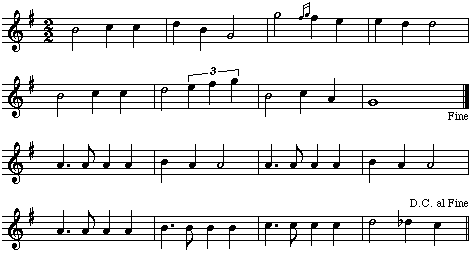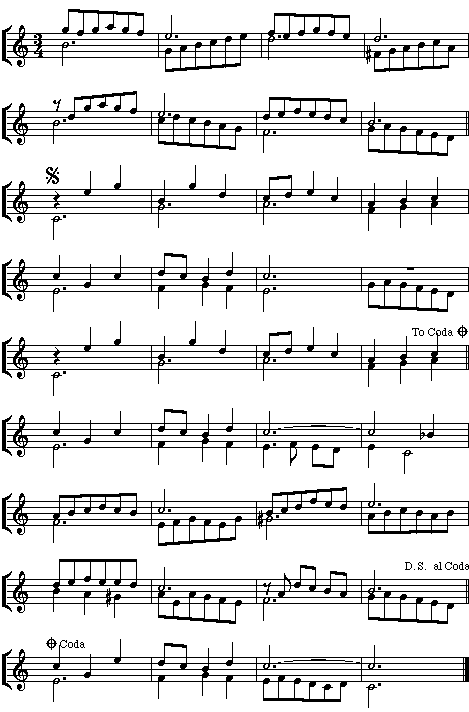Da Capo, Fine, Dal Segno
There are just a few more signs you may encounter that are helpful to know.
Da Capo, abbreviated D.C., literally means "take it from the top", or go back to the beginning of the piece and repeat. Da Capo al Fine (that's pronounced "FEE-nay"), abbreviated D.C. al Fine, means that you go back to the beginning of a piece and repeat until you come to the word Fine, which will usually be marked with a double or final (solid) bar.
Read and listen to the following example:

Notes on Rhythm:
In measure 3, the little notes that look like sixteenth notes are called grace notes. Grace notes serve to embellish a note but of themselves have no rhythmic value. In measure 6, the group of three quarter notes that are bracketed with the number 3 are called a triplet. A quarter-note triplet indicates that three quarter notes are to be played in the time it would normally take to play two quarter notes.
The abbreviation D.S. stands for Dal Segno, and it means that you go back to the spot in the music where you see the symbol  and repeat from there. D.S. al Coda means that you go back to the
and repeat from there. D.S. al Coda means that you go back to the  symbol and repeat until you reach the Coda sign
symbol and repeat until you reach the Coda sign  . When you get to the Coda sign, you skip down to the Coda
. When you get to the Coda sign, you skip down to the Coda  , a number of measures at the end of the piece.
, a number of measures at the end of the piece.
Take a moment to locate each of the above symbols, then read and listen to the following example:
